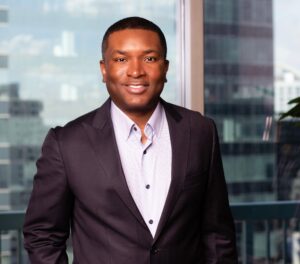
In Staying in the Game: Leading and Learning with Agility for a Dynamic Future, I share the lessons I learned from some of the world’s most agile leaders across sectors. Based on this work, I introduced a new type of leadership: Embodied Agile Leadership. Embodied Agile Leaders (EALs) embody the values and practices of agile leadership and are attuned to their bodies and environment as a source of agile learning feedback, energy, and resiliency.
In this month’s spotlight, I’m honored to shine a light on Bryan Davis, ChFC, CPCU, an inspiring leader who is constantly innovating within the constraints of a highly regulated industry. In this spotlight I draw from a few brief excerpts from Staying in the Game and share some fresh inspiration from our recent conversation.
••••••••
Leaders who stay agile and innovative are keenly attuned to the market’s needs and the competition’s activities and offerings. However, even more than attuning to external threats, Embodied Agile Leaders (EALs) consider themselves their most formidable competitor. Bryan Davis, ChFC, CPCU, Executive Vice President and head of VIU by HUB, an innovative digital insurance platform, is this kind of leader. His passion for continuous improvement and innovation makes him a top leader in the highly competitive insurance industry and beyond. Among top honors awarded throughout his career, Bryan was named to Savoy’s 2024 list of Most Influential Executives in Corporate America.
Never resting on past achievements EALs like Bryan Davis are motivated to do just a little better each time out of the gate.
Even in a highly competitive business, such as financial services, when progress can be measured in relation to others, EALs stay in the game by raising the bar even higher. No stranger to the constraints and competition in a highly regulated industry, Bryan Davis learned to set the bar high early in life when he quarterbacked teams to success from grade school through college. He shared the philosophy that guides him:
I want first to play my best, and in the process, I want to win at the same time. My perspective is that you never want to base your standards on the environment you’re in. Your standards must be higher and bigger than that. And to me, that’s what I do in leadership. That’s what I do in sports. That’s what I do in business. Set your standards high because you can sit here and say, “Hey, I’m at organization X. They used to be mediocre.” So I can come in here, be a little bit better than mediocre, and be great. That’s why I’m always trying to push myself to higher standards, if possible.
Tapping the Power of Intrinsic Motivation
When your most worthy competition is your past performance, coupled with the innate pleasure you derive from continuous learning and improvement, you are propelled by an infinite energy source: intrinsic motivation. Richard Ryan and Edward Deci, psychologists and social scientists at the University of Rochester renowned for founding self-determination theory (SDT), discovered the power of this magic combination when they expanded on their initial research with their colleague Christopher Niemiec.
Looking for factors that support sustained engagement, they studied college students in their first year after graduation. They discovered that recent grads who measured their success solely based on the achievement of extrinsic goals reported overall poorer psychological well-being. In comparison, those whose goals were intrinsically focused reported better psychological well-being.[1]
Similar studies in populations of all ages in business[2],[3] and education[4],[5] reinforce the value of finding a sustaining intrinsic aspiration to motivate you to stay in the game. Of course, you don’t need to be a psychologist to know the importance of finding intrinsic motivation for continuous improvement; you have experience to guide you. If you have ever used achieving a specific goal or reward (e.g., losing fifteen pounds by your high school reunion or winning the top sales award) as your motivation, you’ve likely experienced that motivation wane soon after the goal was achieved. When our primary focus is the external reward, our source of energy and engagement is also largely out of our control. A variety of factors can impact your performance on any given day. If you are motivated to continue only if you consistently step on the podium, you will soon be derailed by the inevitable setbacks.
Competing for Learning
The intrinsic value of learning and improvement is at the heart of Bryan Davis’s practice of Embodied Agile Leadership. He shared that “this is where the great leaders separate themselves from the average or even subpar. I would say to my

organization at this stage, ‘we’re not failing enough.’ And so, when I do performance reviews, everybody will tell you what they did well.” To shift the focus, Bryan starts his performance reviews by asking his leaders to “tell me what you messed up. Because if you haven’t really disrupted anything and had setbacks in something, you’re probably not trying hard enough.” At the same time, he emphasized that this doesn’t mean, “Okay, well, I don’t have to have any accountability. I can just go mess up something. We’re all kumbaya, and this is not a big deal.”
Throughout his impressive career, Bryan has observed and studied many leaders. He discovered, “The great leaders know how to find that balance between one extreme and the other. As a leader, you promote this environment of ‘How do we find the positivity and accountability in failures?’ And accountability could be like, ‘Man, what should I learn to do differently?'” It takes both courage and humility to model the continuous learning of Embodied Agile Leadership. EALs know this because they don’t expect or invite their colleagues to venture into new territory they don’t explore themselves.
Leading with Intentionality and Patience
Two years into launching their innovative new division, I asked Bryan what new lessons he was learning. While operating as a startup within a long-established organization, his team were early adopters of agile ways of working. Bryan shared two critical insights relevant to leaders across industries who are guiding agile organizations:
More than the Agile techniques, success depends on an agile mindset. This takes an intentionality. It is not something that is natural for some people. You have to be so intentional about calling out the small things to create the environment and culture that you want. And that’s something that I’ve observed now, two years in, that it’s so easy to creep back into a waterfall [traditional project management] mindset. And so the leadership challenge is not necessarily saying, “Hey, we want to be agile.” The leadership challenge is being able to see the small things that create the end game that you’re shooting for.
Bryan’s insights are particularly relevant for the majority of companies that adopt Agile frameworks or undergo enterprise-wide agile transformations and are driven by the promise of improved speed and efficiency. This is because those who focus solely on speed rarely achieve the true benefit of becoming more agile: maximizing stakeholder value. Achieving this result requires something that is seldom talked about in Agile circles: patience. It takes a seasoned and visionary leader like Bryan to practice it. He reflected that,
It takes a lot of patience because you have to let some things burn. You have to let some things burn to get to the overall place you’re trying to get to. You lose some battles to win the war, and you can have a team fighting it out, and they’re fighting for their lines in the sands of waterfall silos. That’s what they’re fighting for. So, I can be the parent that goes and puts the pacifier in their mouth and babysits them, but then we never grow and mature. So, I might’ve put that fire out, but it’s going to be another fire. It’s going to be a forest fire. The fire’s going to keep getting bigger.
Bryan added that he takes inspiration from the Navy Seal credo that “slow is smooth, smooth is fast.” He shared the paradox of this approach, “It is patience in the beginning so that you can go fast.” There is no prescription for the intentionality and patience of Agile leadership, Bryan reflected, “That’s the art. That’s the art. That’s my day job, honestly.”
References
[1] Christopher P. Niemiec, Richard M. Ryan, and Edward L. Deci, “The Path Taken: Consequences of Attaining Intrinsic and Extrinsic Aspirations in Post-College Life” Journal of Research in Personality 43, no. 3 (June 1, 2009): 291–306, https://doi.org/10.1016/j.jrp.2008.09.001.
[2] Teresa Amabile and Steven Kramer, The Progress Principle: Using Small Wins to Ignite Joy, Engagement, and Creativity at Work. (Cambridge, MA: Harvard Business Press, 2011).
[3] Alfie Kohn, Punished by Rewards: The Trouble with Gold Stars, Incentive Plans, A’s, Praise, and Other Bribes. (Boston: Houghton Mifflin, 2018).
[4] Carol Dweck, Mindset – Updated Edition: Changing The Way You Think To Fulfill Your Potential. (New York: Hachette, 2017).
[5] Angela L. Duckworth, Christopher Peterson, Michael R. Matthews, and Dennis D. Kelly, 2007. “Grit: Perseverance and Passion for Long-Term Goals.” Journal of Personality and Social Psychology 92 no. 6 (2007): 1087–1101. https://doi.org/10.1037/0022-3514.92.6.1087.
••••••••
DISCOVER MORE lessons from Bryan Davis and other Embodied Agile Leaders from from across industries in Staying in the Game: Leading and Learning with Agility for a Dynamic Future. Now Available on Audible!



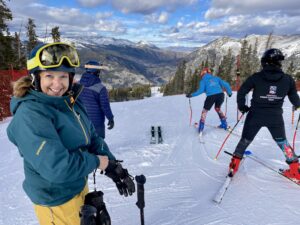
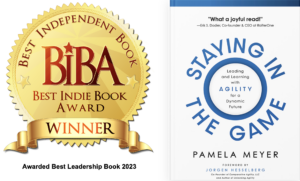
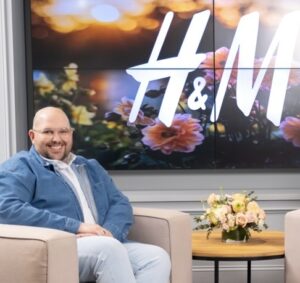
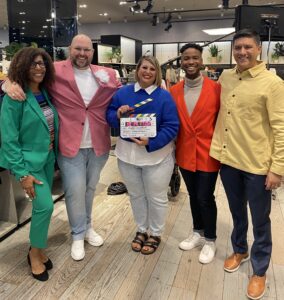
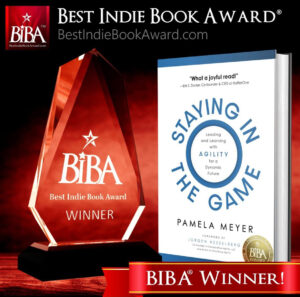 READ MORE
READ MORE

